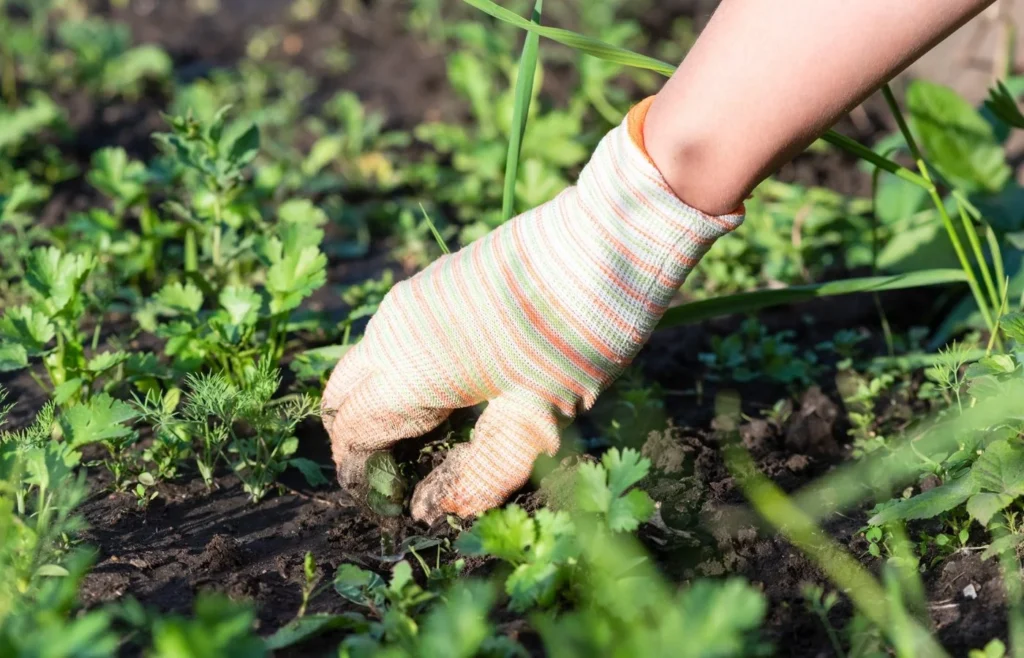Have you ever considered using boiling water to kill weeds? It’s a simple, environmentally-friendly method that’s very appealing: it doesn’t require any chemicals, and relies solely on something we all have at hand.
But before taking the plunge, you may be wondering whether this technique is really risk-free for your garden. Is it as effective as people claim? And above all, what impact can it have on your plants or the soil? Here’s the lowdown.
A natural alternative to chemical weedkillers
When it comes to eliminating weeds, there are many solutions on offer: white vinegar, baking soda, coarse salt, soda crystals or the famous nettle purin.
These home remedies are often acclaimed for their effectiveness and low environmental impact. Yet boiling water may well be the simplest of them all. There’s no need to search for specific products, just a little hot water.
The main advantage of this method is its total absence of toxic products. Unlike chemical weedkillers, which can pollute the soil and harm biodiversity, boiling water is gentler. But gentle does not mean safe. If you pour this water too close to your favorite plants, they could well suffer the same fate as weeds.

Why does it work?
The mechanism is quite simple. By pouring boiling water directly onto the weeds, the thermal shock burns them and destroys their plant tissue.
This quickly leads to the death of the aerial parts of the plant: the leaves blacken, the stems wither, and in just a few days, these unwanted weeds disappear. The process is quick and requires no extra physical effort, as is the case with hand-pulling.
One of the great advantages of this method is that it works in depth. Not only does the water destroy the visible parts of the plants, it can also damage their roots, preventing rapid regrowth. However, it’s important to note that this technique is not infallible. Some plants, especially the most resistant weeds, may require several passes to be completely eradicated.
So how do you go about it?
It couldn’t be simpler to try this technique at home. Simply heat water to around 125°C and pour it directly onto the weeds you wish to eliminate.
Be careful, however, to be precise: don’t water your whole garden, as the boiling water could damage your other plants. This technique is particularly effective for weeds growing in the interstices of flagstones, pavers or between the joints of your terrace.
Don’t hesitate to be patient. The effects may not be immediately visible, but within a few days, weeds will begin to blacken, dry out and eventually disappear. For the toughest weeds, we recommend repeating the operation several times during the season, up to 3 or 4 times a year for optimum results.
Is it safe for the rest of your garden?
Although this method is natural and non-toxic, it is not without risk for the rest of your garden.
Boiling water, by touching surrounding plants, can easily damage the plants you wish to preserve. It is therefore essential to pour the water precisely, targeting only the weeds. Take care to protect your other plantings from overflowing.
Another point to consider: while this technique is formidable for small weeds or those growing in restricted areas, it may be less effective on larger areas. Deep-rooted or particularly resistant plants, such as quackgrass, often require complementary, even more drastic, methods to be completely eliminated.

A miracle solution?
Although boiling water is a simple, environmentally-friendly method, it is not a miracle solution for all types of weeds. On small surfaces, such as driveways or between cobblestones, it works wonders. But for large overgrown areas or plants with deep roots, you may need to consider other options, such as mulching or hand-pulling.
Finally, boiling water is a natural alternative to chemical weedkillers, ideal for small, one-off interventions. If you’re looking for an environmentally-friendly way to weed without damaging your soil, it’s well worth a try.
But bear in mind that it has its limits and must be used with care to avoid harming your other plants. So, are you ready to try this natural solution in your garden?

